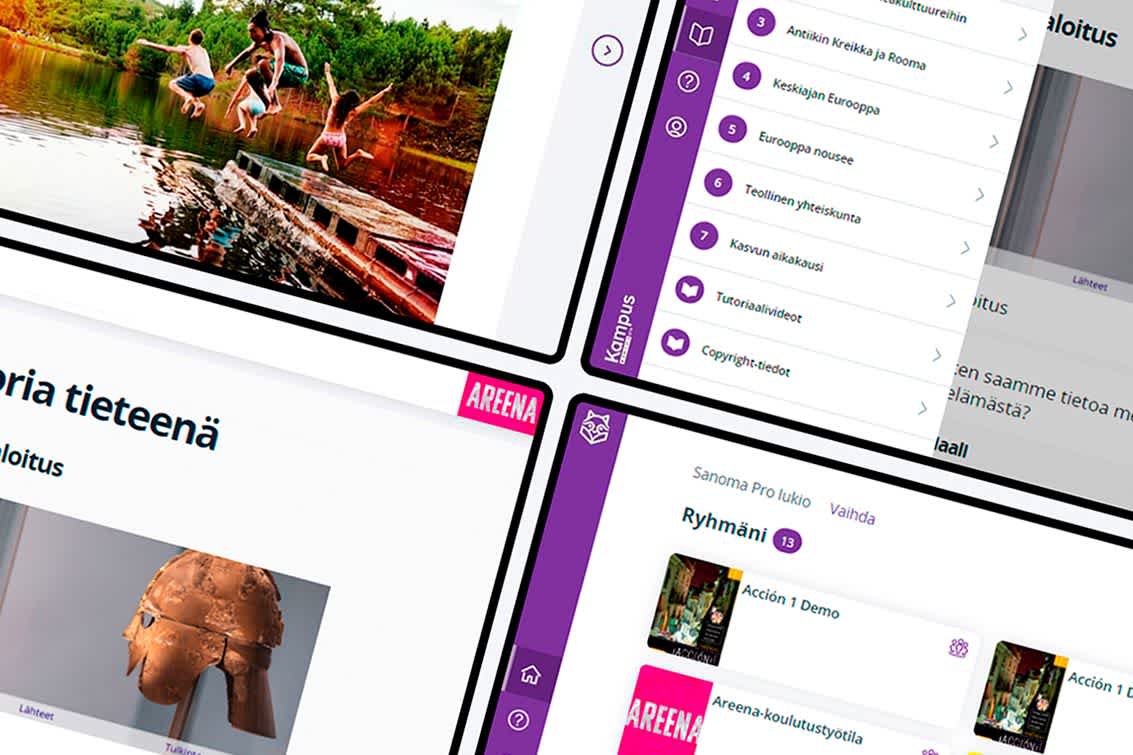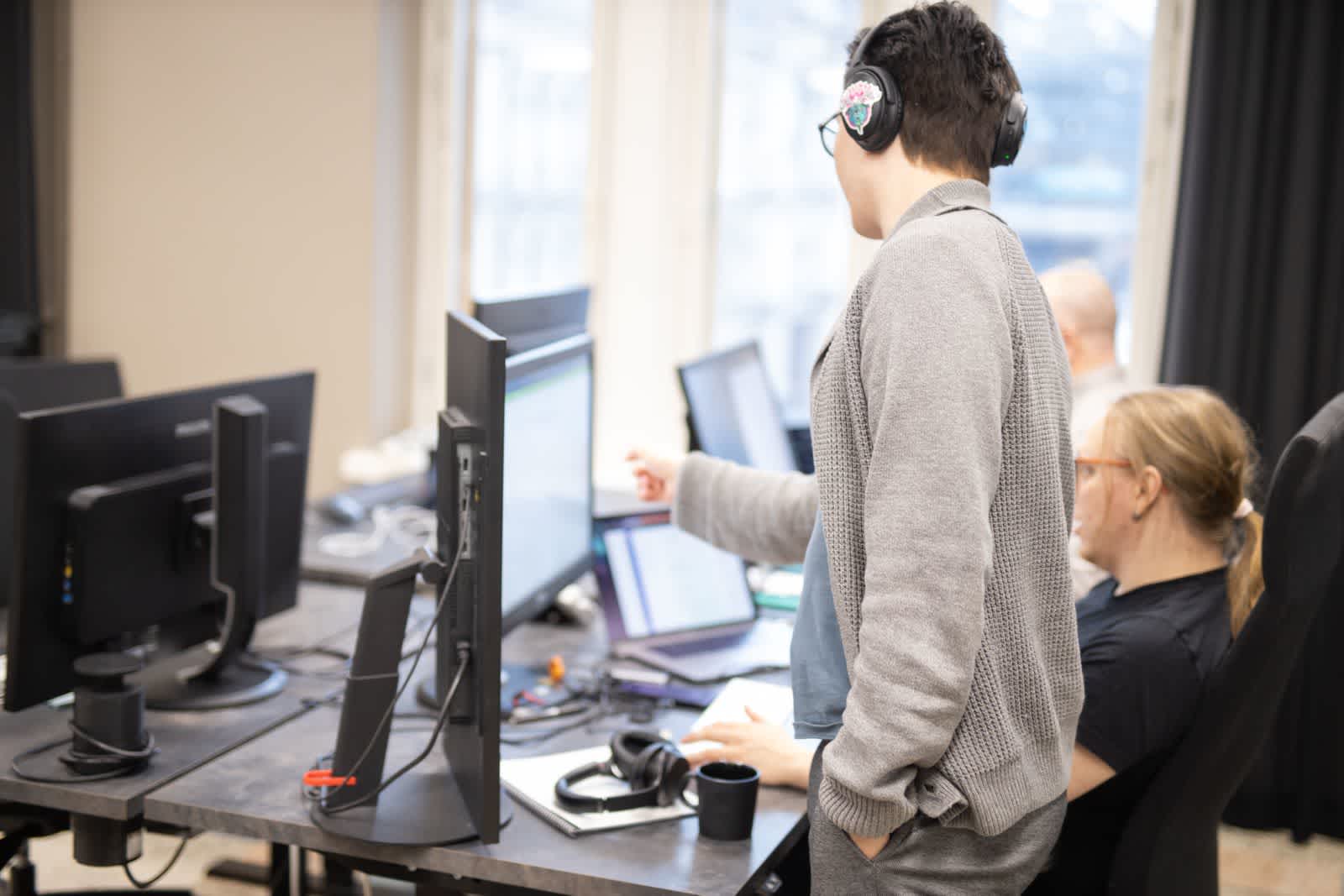For the last decade Sanoma Pro has focused heavily on digital learning, but the key question always remains: what will be the learning environment of the future?
Taking learning digital

Our dynamic and organized solution
We prototyped and tested alternative ways to visualize and organize the learning material - over 30,000 pieces of information including text, audio, video, images, exercises, and games - then showed these early-stage prototypes to pupils and teachers. Feedback showed the continuous stream of bite-sized information was user-friendly for both groups of users: the pupils saw value in how the personalized feed remembers where you are in each topic and how it offers a simple way to submit homework, while teachers liked the ability to dynamically manage the feed with their own material (including external content such as YouTube videos) and the fact they can give personalized, context-based feedback.
By default, the pupil will see the content feed as it would be in a book, but the teacher can also include tests, tips, and reminders. The teacher has a dashboard where they can assess the class as a whole or create smaller groups and evaluate the progress of individual pupils.
We also made device independence a design principle, with the solution working alongside the use of books. In a digital environment, we can include audio and video alongside books and content from pupils and teachers and keep it all in context – as well as making it easier to carry information and homework to and from school.
Take your development process to the next level, and download our Design Sprint ebook!
The design sprints clarified user needs and helped us to identify and design the key features and define the role of the product in its existing environment.


The bright idea
What if we could deconstruct the existing learning material to create a truly personalized learning path for pupils? This would enable teachers to better respond to the varying needs of individual classes and pupils.
By breaking down the boundaries of traditional learning materials and separating the information into discrete parts, we could create an individual, dynamic learning stream which adapts over time to better support teachers’ individual needs and matches the ability of any individual pupil. The teacher can support the stream’s flow on a group or individual level by sharing tips and increasing or decreasing the difficulty level. The solution would scale from individual mobile phones and tablets to the projector screen in front of a class.
The inevitable challenge
We knew that the approach would be disruptive, meaning it would face resistance. There were also two key challenges for us to solve. Firstly, breaking down structures is easy, but how should we reconstruct and represent that information logically? Should we present the information through topics or themes? Could it be a feed? Are individual pieces of information portrayed as individual cards or should we support phenomenon-based learning through interactive “molecules” consisting of grouped information?
The other challenge we faced was that schools have a finite budget for digital tools. In most digital transformations the physical environment is not a consideration, which makes it easier to rethink the business as a whole. In this case, the complexity and challenges are far greater. Which leads to perhaps the most difficult question: how do we juggle the coexistence of traditional books with a new digital learning environment that could perhaps take decades to complete.

So, how did it go?
We believe this new digital learning environment paves the way for future learning.
By first establishing a solid understanding of the problems and clarifying the concept we were able to present Sanoma Pro with a model for reconstructing their content. This concept enabled us to then engage internal stakeholders to review and reorganize the editorial processes to support the user experience.
We are thrilled for Sanoma Pro as we have seen how the learnings and methods from this single project have now taken a larger role in the company, driving the building of a customer-driven culture.
